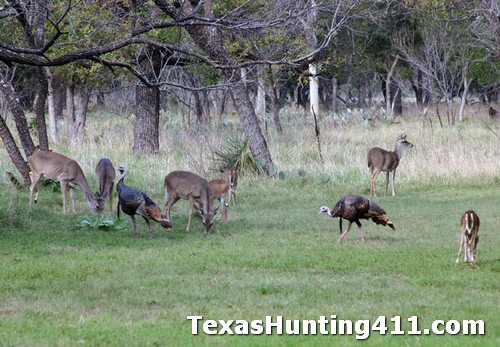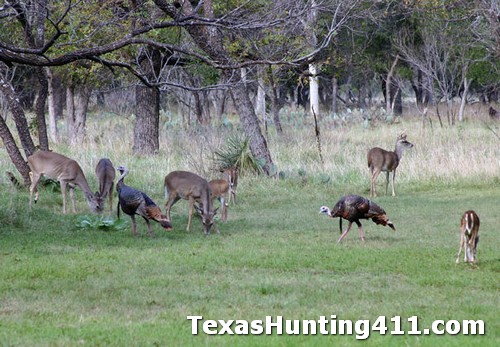There are good numbers of wild turkey found throughout Texas, but the best tip I can offer for better turkey hunting is to develop better habitat on the property that you hunt. Proper land use and habitat management is critical to keeping birds on your property if they are in the area. With the large amount of Texas that is kept in pasture or improved pasture, it would appear that we have all the permanent openings that we would ever need for wild turkeys. In some cases this is true, but often pastures and fields offer little for turkeys.
Openings are needed to provide important summer range for young turkeys and can provide an excellent source of food for the flock year-around. Before discussing food plots one thing should be made clear, we are talking about openings that are already established. Do not clear trees to create openings. It is a lot harder to grow a mast producing oak or dogwood than grass. Use the openings that already exist and manage those areas for turkey, whether it be through planting spring food plots for turkey or the planting of native forbs and grasses.

A 10 to 20-foot wide strip of high weeds should be left along the edge of mowed fields, fence rows, and pastures for nesting and escape cover. Property owners can also increase spring and summer production of annual weeds and grasses next to these unmowed strips by shallow disking an adjacent 15 foot strip after the first winter freeze. This will make obtaining food easier for hens that nest in the weeds during the spring and will provide a ready supply of insects for the young when they hatch.
Plants found in fields and openings should be reduced by late winter with mowing, disking, close grazing, or burning to discourage hens from nesting where mowing may later destroy turkey nests. Therefore, do not mow, disc, or burn the high weeds purposely left along fence rows and woodland borders to encourage nesting.
Pastureland can provide much of the open habitat needed for turkeys if the adjacent woodlands contain a variety of mast producing hardwoods and fruit producing shrubs. When pastureland is used for both wild turkey habitat and hay production, care must be taken during cutting and bailing operations. Nesting hens may be killed or their nests destroyed if fields are mowed during the nesting season.
In addition, even mowing around a nest site will usually be of little benefit since this just tends to pinpoint the nest for predators. Leaving a small, unmowed area in an otherwise mowed field appears to act as a red light alerting predators to an area needing investigation. Most turkey nesting is completed by the end of May, waiting to mow until early June will give your turkeys a chance for eggs to hatch and poults to go mobile.
Better turkey hunting can be achieved in the parts of Texas where birds are found by managing both the habitat and the turkey population found on a property. The easiest way to have more turkeys is to provide the habitat they need and then let them produce those birds on an annual basis. Weather is also a factor, but it always comes down to whether hens can find a suitable place to nest. A lack of habitat means little to no successful nests and that equates to no new birds and reduced hunting in the future.
